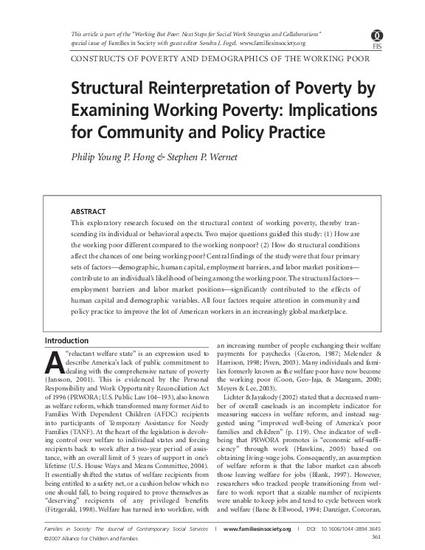
This exploratory research focused on the structural context of working poverty, thereby transcending its individual or behavioral aspects. Two major questions guided this study: (1) How are the working poor different compared to the working nonpoor? (2) How do structural conditions affect the chances of one being working poor? Central findings of the study were that four primary sets of factors—demographic, human capital, employment barriers, and labor market positions—contribute to an individual's likelihood of being among the working poor. The structural factors—employment barriers and labor market positions—significantly contributed to the effects of human capital and demographic variables. All four factors require attention in community and policy practice to improve the lot of American workers in an increasingly global marketplace.
© Alliance for Children and Families, 2007.

Author Posting. © Alliance for Children and Families, 2007. This article is posted here by permission of the Alliance for Children and Families for personal use, not for redistribution. The article was published in Families in Society, Volume 88, Issue 3, 2007, http://dx.doi.org/10.1606/1044-3894.3645.